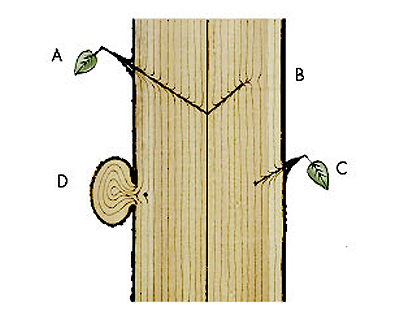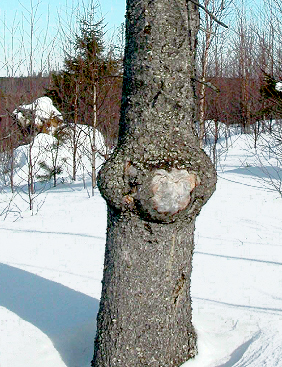Branches usually develop near the growth area in the top. Their root is in the center of the tree. These kind of branches are called core branches. Core branches grow in the coniferous trees as regular layers. For some coniferous trees, such as young pine trees, you can measure the age of the tree by the number of layers of core branches. The growth of branches in spruces is not so regular. The tree grows smaller branches between layers, which are called needle branches. The core branches of deciduous trees aren’t so regular but instead branch out without a pattern.

A. Living core branch
B. In grown core branch
C. Water branch
D. Burl
In most deciduous trees there are also water branches that are not rooted in the core, but begin instead from buds inside the trunk. These branches develop to just as strong branches as core branches and thus lessens the quality of lumber unless mechanically removed.

When the branches dry up from the bottom up, they will fall off and the trunk will grow over their roots. This is why branching the tree is important to make the growing process easy as possible for the tree.
Sometimes the water branch can’t penetrate the bark and the result is a burl. The tree can also grow burls to encapsulate foreign matter inside the trunk.
Different kinds of branches
A healthy branch

A dead branch

A dead branch that will fall off

A dead branch that has fallen off

A branch surrounded by bark

A rotten branch

A leaf branch

A “moustache” branch

A group of branches

A horn branch

An edge branch

Pearl branches
